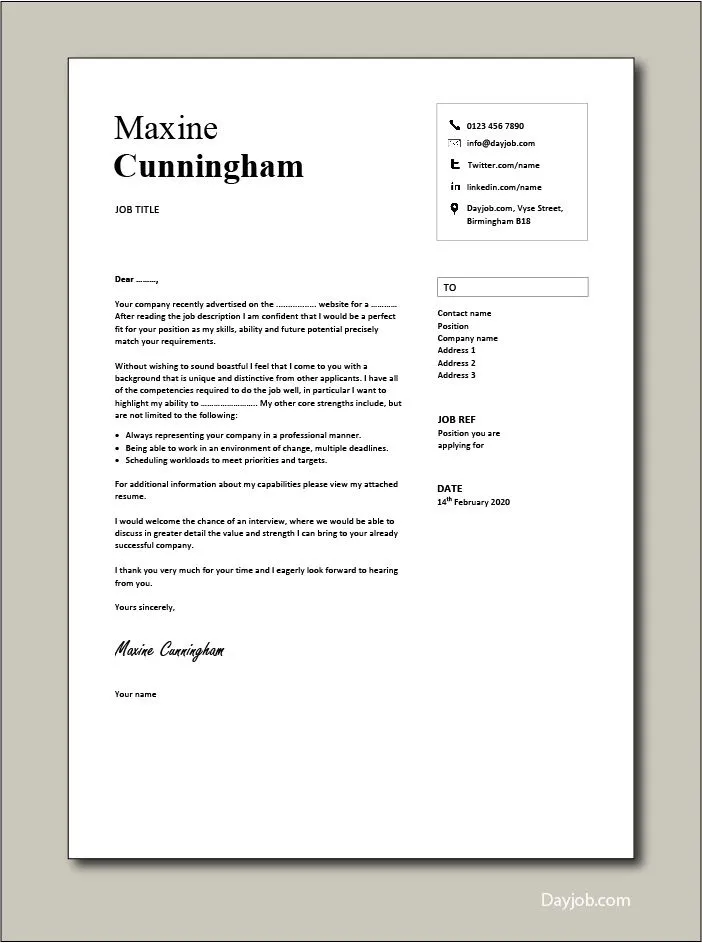What is a Cover Letter?
A cover letter is a crucial document that accompanies your resume when applying for a job. It serves as your introduction to the hiring manager, providing a personalized overview of your qualifications, skills, and experience. Unlike a resume, which is a concise summary, a cover letter allows you to elaborate on your accomplishments and express your interest in the specific position and company. It showcases your personality, writing skills, and your understanding of the job requirements. Crafting a compelling cover letter is essential in making a strong first impression and increasing your chances of getting an interview.
Why Use a Cover Letter?
Cover letters are not just formalities they are powerful tools. They provide context to your resume and help you stand out from the competition. A well-written cover letter demonstrates your communication skills, attention to detail, and genuine interest in the role. It allows you to explain any gaps in your employment history, highlight specific achievements, and tailor your application to the job description. By using a cover letter, you can showcase your unique value proposition, explain how your skills align with the company’s needs, and convince the hiring manager that you are the perfect fit for the position.
Importance of a Cover Letter
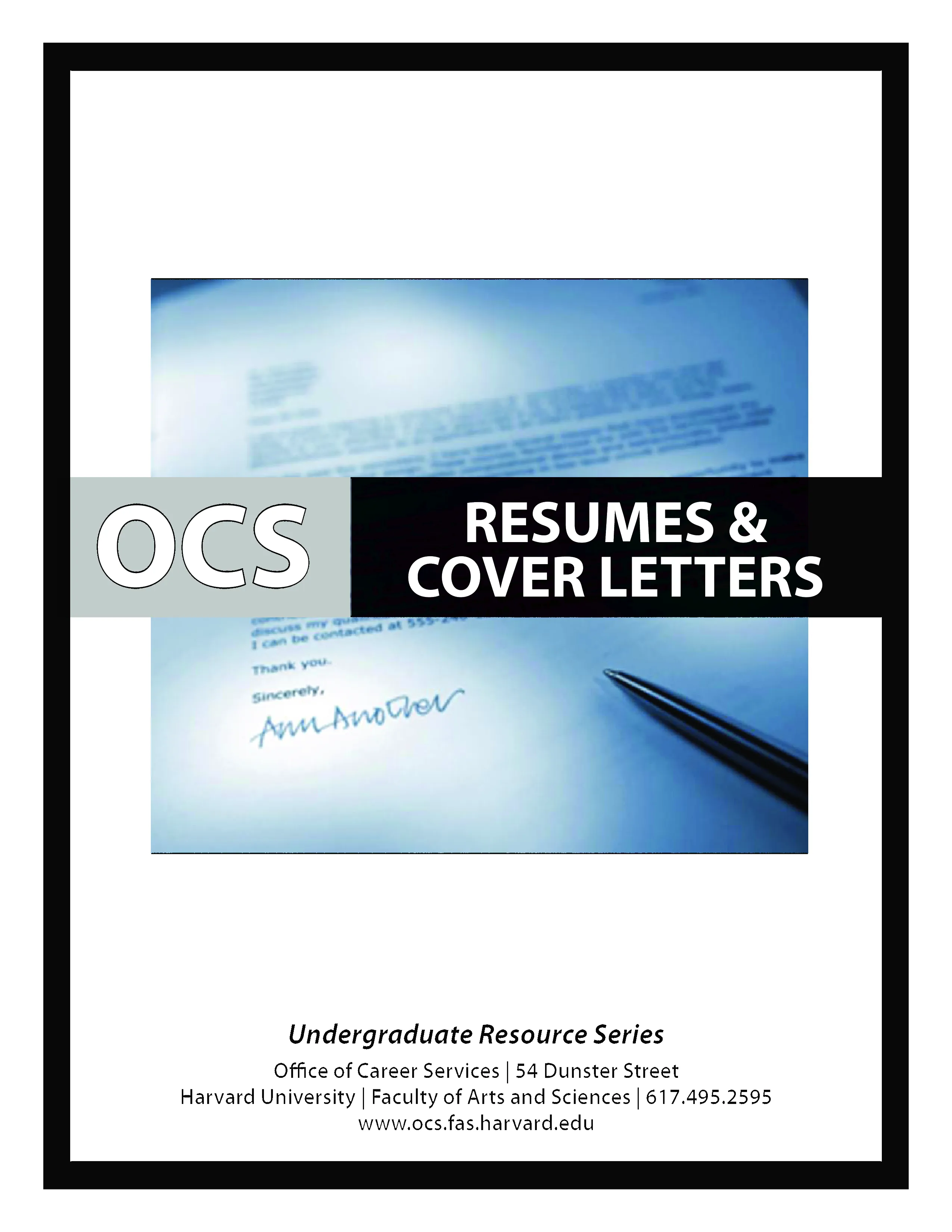
The importance of a cover letter extends beyond just getting an interview. It is a reflection of your professionalism and your understanding of the job application process. Many employers consider a cover letter as a mandatory part of the application, and not including one can be a red flag. A compelling cover letter shows that you have done your research on the company, understand the role, and are genuinely interested in contributing to the team. It also demonstrates your ability to communicate effectively, which is a valuable skill in any workplace. A well-crafted cover letter can significantly increase your chances of getting noticed by the hiring manager, ultimately leading to job opportunities.
What to Include in a Cover Letter
Your cover letter should include key elements that provide the hiring manager with relevant information. Start with your contact information, including your name, address, phone number, and email. Address the hiring manager by name, if possible, to show you’ve done your research. In the opening paragraph, state the position you’re applying for and how you found the opportunity. The body paragraphs should highlight your relevant skills, experience, and accomplishments, quantifying your achievements whenever possible. Conclude with a strong closing paragraph, reiterating your interest and inviting the hiring manager to contact you for an interview. Proofread meticulously before sending it!
Contact Information
Your contact information is a crucial part of your cover letter, enabling the hiring manager to easily reach you. At the top of your cover letter, include your full name, address, phone number, and professional email address. Ensure your email address is professional and appropriate for job applications. Double-check the accuracy of the information to avoid any errors that could prevent the hiring manager from contacting you. Maintaining accurate contact information is essential for a smooth and efficient communication process during the job application and hiring phases.
Greeting
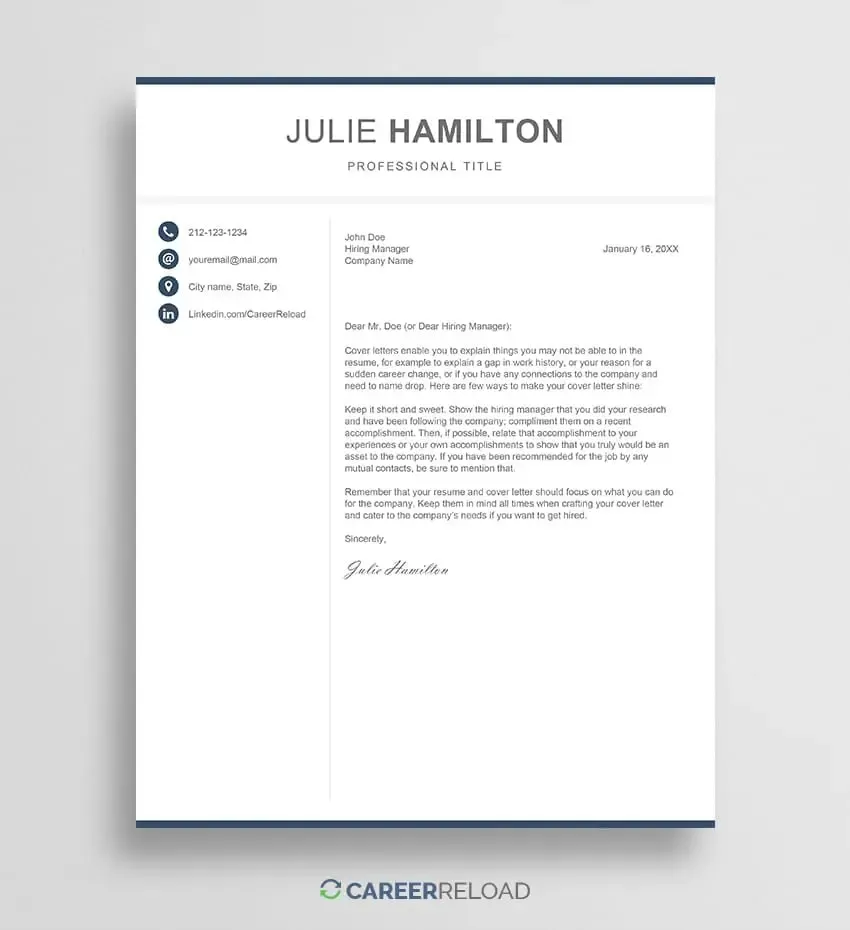
Addressing the hiring manager appropriately sets the tone for your cover letter. Ideally, you should address the hiring manager by name. Research the company’s website or LinkedIn to find the name of the person responsible for hiring. If you are unable to find a specific name, use a general greeting like “Dear Hiring Manager” or “Dear [Department Name] Team.” Avoid generic greetings such as “To Whom It May Concern” as these can make your application feel impersonal. Showing that you’ve taken the time to find the correct name demonstrates your attention to detail and your genuine interest in the position.
Opening Paragraph
The opening paragraph of your cover letter is your chance to grab the hiring manager’s attention. Clearly state the position you are applying for and where you found the job listing. Briefly mention your most relevant skills or experiences that align with the job requirements. Express your enthusiasm for the role and the company, showing your genuine interest. Keep the opening concise and focused on making a strong first impression. This sets the stage for the rest of your letter and encourages the reader to learn more about your qualifications.
Body Paragraphs
The body paragraphs are where you showcase your qualifications and demonstrate your value to the company. Use these paragraphs to highlight your relevant skills, experience, and accomplishments. Provide specific examples that quantify your achievements whenever possible, using numbers and data to show your impact. Tailor each paragraph to the specific job requirements, addressing the skills and experiences mentioned in the job description. Focus on how your skills and experiences align with the company’s needs and how you can contribute to their success. Support your claims with evidence, showcasing your ability to deliver results.
Closing Paragraph
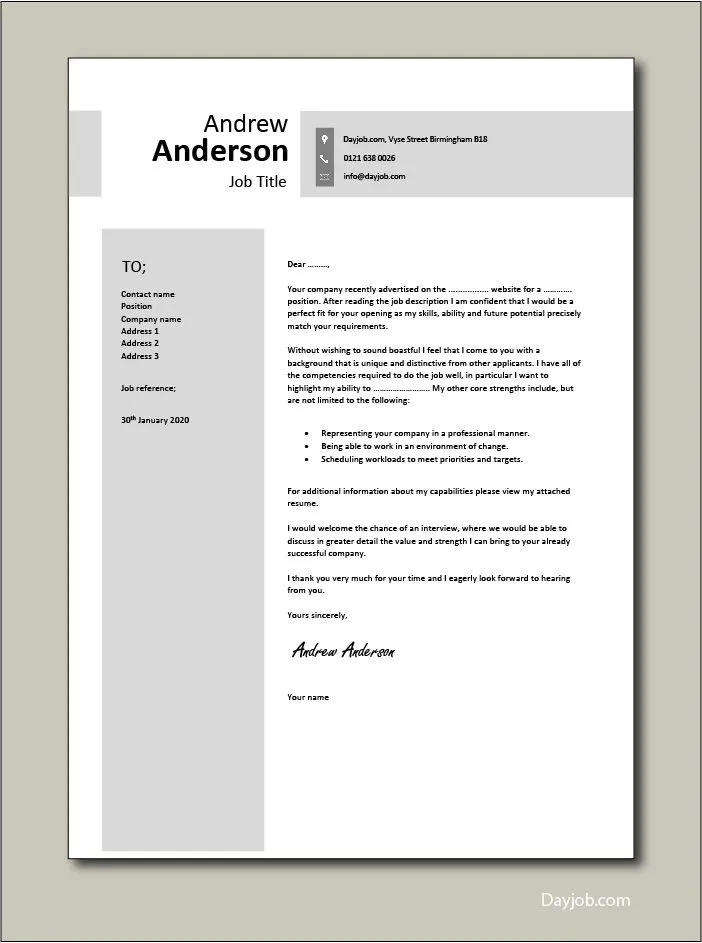
The closing paragraph should leave a lasting positive impression on the hiring manager. Reiterate your interest in the position and express your enthusiasm for the opportunity to contribute to the company. Thank the hiring manager for their time and consideration, and include a call to action by inviting them to contact you for an interview. Maintain a professional tone, and proofread the entire letter to eliminate any errors. A well-crafted closing paragraph summarizes your key points and signals the end of your application while leaving a positive impression.
How to Download Free Cover Letter Templates
Downloading free cover letter templates is a straightforward process. Start by searching online for “free cover letter templates” and explore the search results. Many websites offer a variety of templates in different formats, such as Microsoft Word (.doc or .docx) and Google Docs. Select a template that fits your needs and the specific job you are applying for. Click the download link and save the file to your computer. Once downloaded, open the template in a word processing program and customize it with your personal information, skills, and experience. Remember to tailor the template to the job description.
Where to Find Free Cover Letter Templates
There are numerous online resources for finding free cover letter templates. Popular websites include Microsoft Office, Google Docs, and various career-focused websites. Many professional resume and cover letter services offer free templates as well. When selecting a template source, look for sites that offer a wide variety of templates, including professional, modern, and simple designs. Check reviews or testimonials to ensure the website is reliable. Ensure the templates are downloadable in a common format like .doc or .docx to ensure ease of use. Consider templates offered by career experts or educational institutions, which often have high-quality designs. Choose reputable sources to ensure your template enhances your job application.
Professional Cover Letter Templates
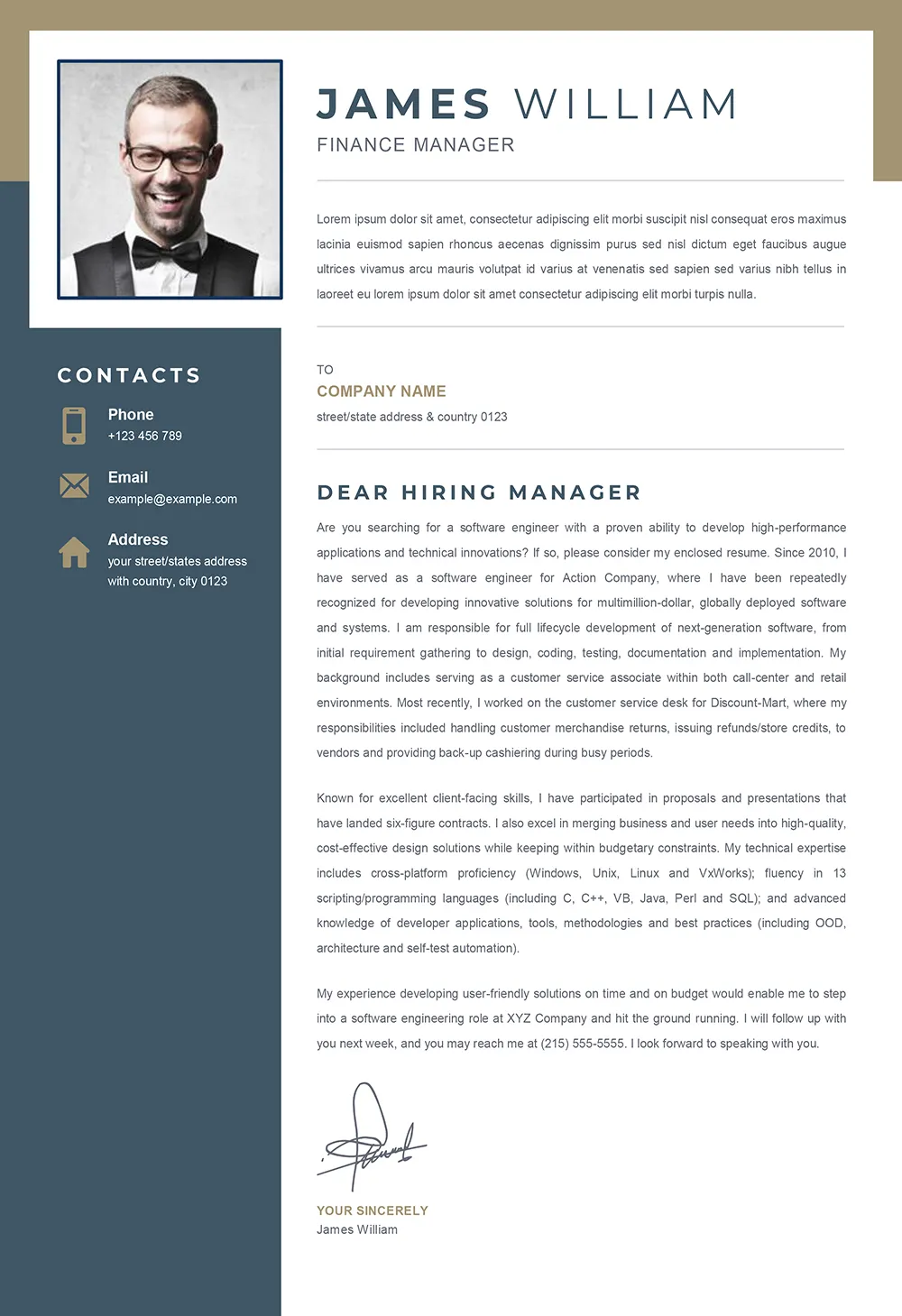
Professional cover letter templates typically feature clean, straightforward designs that highlight your qualifications and experience in a formal manner. They often use classic fonts and traditional formatting. These templates are suitable for a wide range of industries and roles, particularly in corporate environments. They emphasize clarity and readability, ensuring that your key skills and achievements are easy for the hiring manager to identify. They help demonstrate that you take your job search seriously and are committed to presenting yourself in a polished, professional manner. Utilize them if you are targeting positions where a traditional approach is valued.
Modern Cover Letter Templates
Modern cover letter templates incorporate contemporary design elements, such as bold fonts, creative layouts, and visually appealing formatting. These templates are ideal for industries where creativity and innovation are valued, such as marketing, design, and technology. They can help you stand out from the crowd and showcase your personality and style. When choosing a modern template, ensure it remains professional and easy to read. Don’t let the design overshadow the content of your letter. Choose templates that balance aesthetics with functionality, ensuring that the hiring manager focuses on your qualifications.
Simple Cover Letter Templates
Simple cover letter templates prioritize readability and ease of use, featuring clean layouts and minimal design elements. These templates are perfect for any job application, especially if you want to focus on the content of your letter. They provide a classic, uncluttered look, ensuring that your qualifications and experience are the primary focus. Simple templates are versatile and work well for various roles and industries. They are also easier to customize and adapt to your specific needs. These templates are useful if you want your writing and skills to do the talking. It is about letting your qualifications speak for themselves.
Free Cover Letter Templates [Top 7] Download
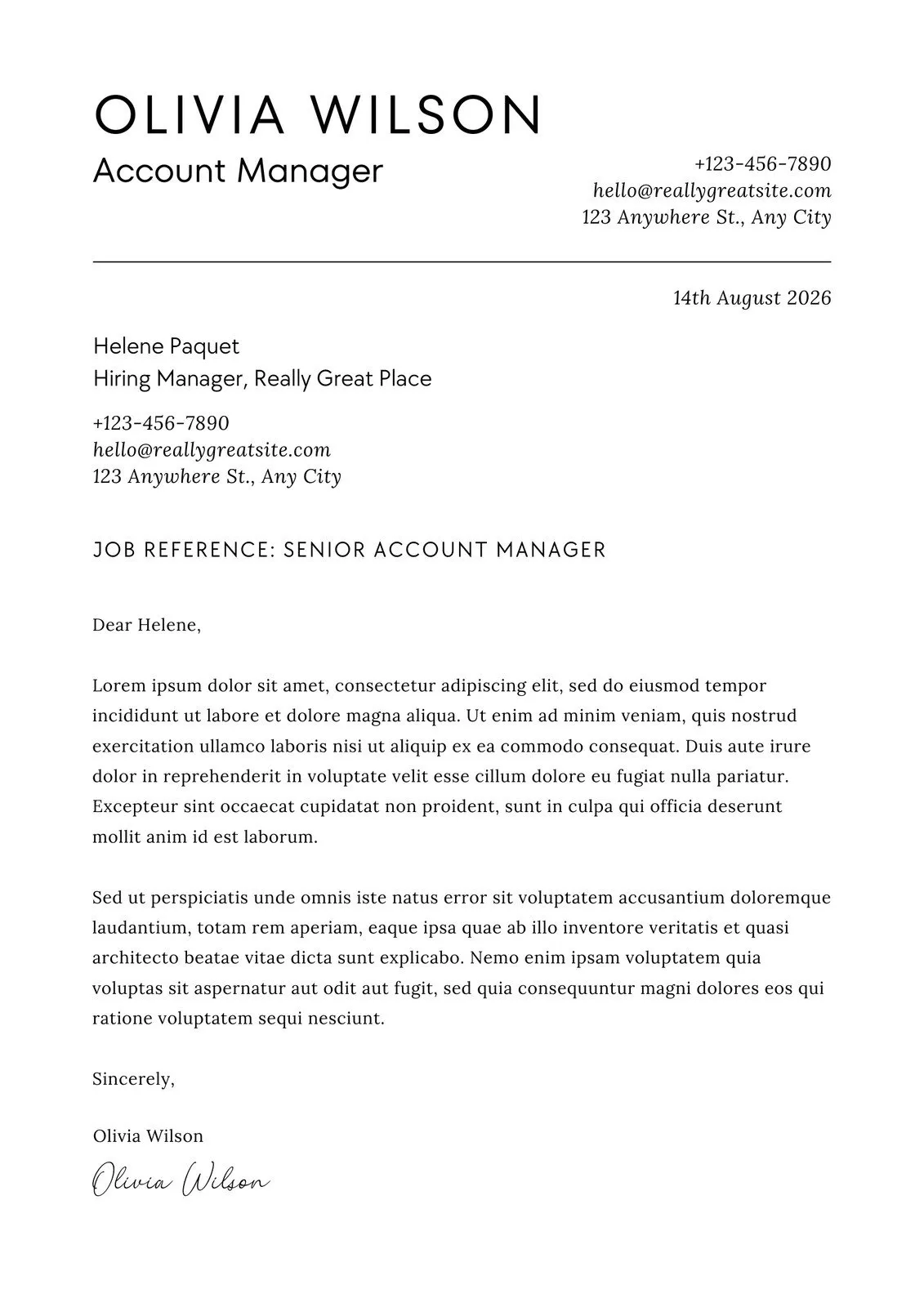
In conclusion, leveraging free cover letter templates can significantly enhance your job application process. Choose the right template to match your style, the job, and your industry. Use the insights and strategies provided to write a compelling cover letter that effectively showcases your skills and experiences. By downloading and customizing these templates, you can create professional, polished cover letters that highlight your qualifications, ultimately increasing your chances of securing an interview. Start downloading and tailoring your cover letters today, and take a significant step towards landing your dream job.
